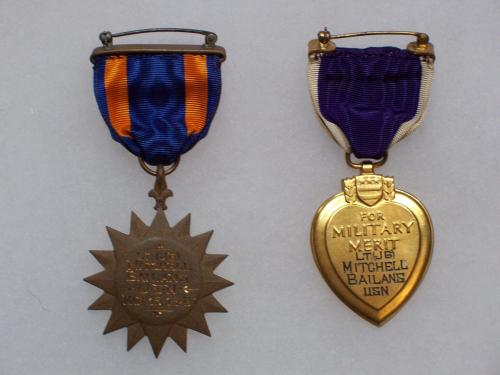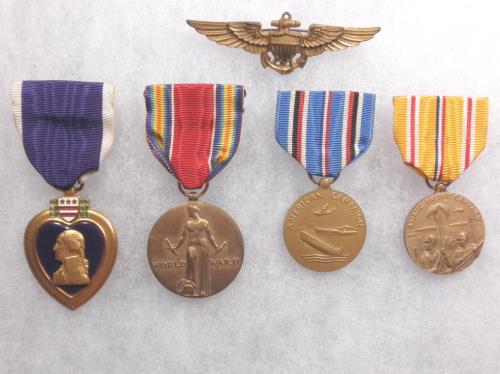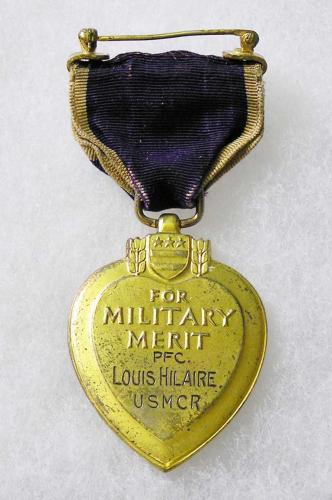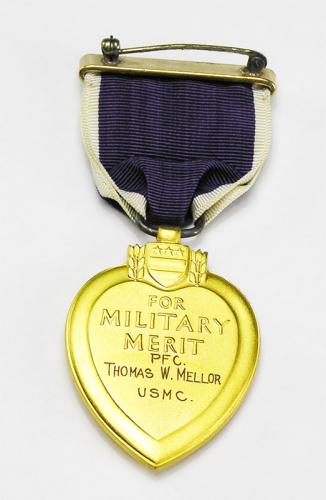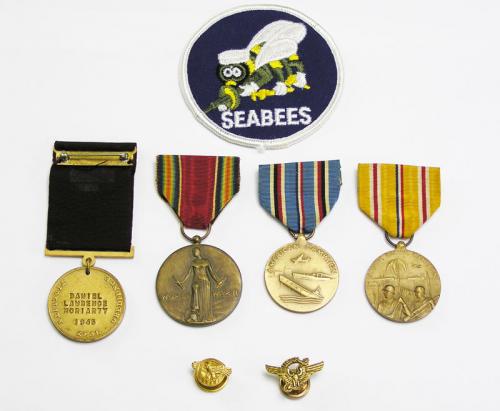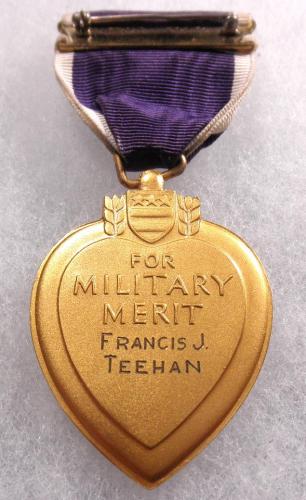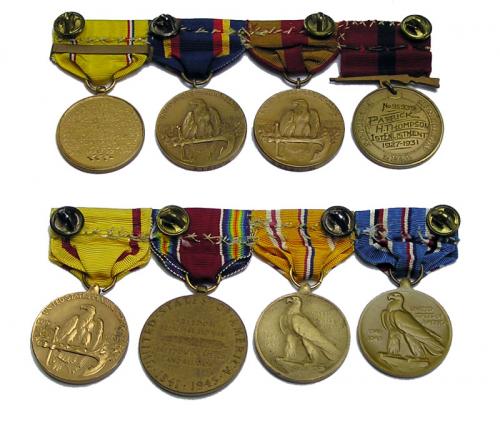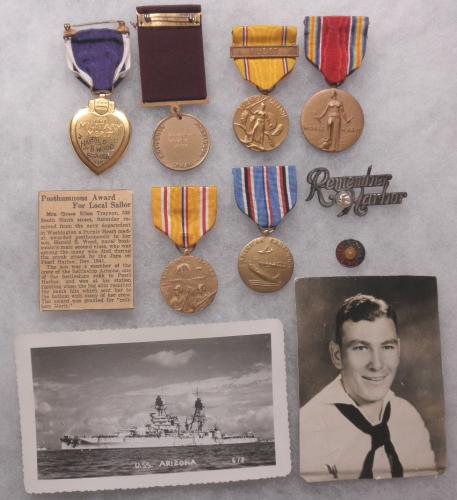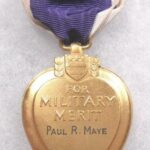This is a most unusual Purple Heart to a Private in the Air Corps who was killed when the USAT Dorchester was sunk just 90 miles south of Greenland at Lat. 59 deg. 23' North, 48 deg. 42' West, as it was enroute to Europe from New York. Paul Maye was born Setember 15, 1916 and enlisted in the Air Corps October 1, 1942 at Fort Thomas, Newport, Kentucky. He was married at that time to Ruth Maye, address listed as Cinncinati, Ohio. The group includes Private Maye's officially engraved slot brooch pothumous Purple Heart, edge numbered 202101, and its presentation case. A lot of research is included including Maye's IDPF, and a casualty list for the sinking. This is the same ship on which the 4 Chaplains lost their lives by giving up their life vests. They were memorialized with a commemerative stamp issued in 1948.
The USAT Dorchester entered Army service in February 1942, crewed by many of her former officers, including her master initially, and a contingent of Navy Armed Guards to man the guns and to handle communications.
Coast Guard Cutter Escanaba (WPG-77) rescues survivors of USAT Dorchester, 3 February 1943.
In February 1943, Convoy SG-19 left St. John's Newfoundland, bound for the Army Command Base at Narsarsuaq (aka Blue West One) in southern Greenland. SG-19 consisted of six ships: Dorchester, two merchant ships (SS Lutz and SS Biscaya) that were leased by the United States from the Norwegian government-in-exile, and their escorts, the small United States Coast Guard cutters Comanche, Escanaba(both 165 feet), and Tampa (240 feet).
During the early morning hours of 3 February 1943, at 12:55am, Dorchester was torpedoed by German U-boat U-223. The damage was severe, boiler power was lost, and there was inadequate steam to sound the full 6-whistle signal to abandon ship, and Dorchester sank by the bow in about 20 minutes. Loss of power prevented the crew from sending a radio distress signal, and no rockets or flares were launched to alert the escorts. A severe list prevented launch of some port side lifeboats, and some lifeboats capsized through overcrowding. Survivors in the water were so stiff from cold they could not even grasp the cargo nets on rescue vessels. The crew of the Escanaba employed a new "retriever" rescue technique whereby swimmers clad in wet suits swam to victims in the water and secured a line to them so they could be hauled onto the ship. By this method, Escanaba saved 133 men (one died later) and Comanche saved 97 men of the 904 aboard Dorchester.
Life jackets offered little protection from hypothermia, which killed most men in the water. Water temperature was 34 °F (1 °C) and air temperature was 36 °F (2 °C). When additional rescue ships arrived on 4 February "hundreds of dead bodies were seen floating on the water, kept up by their life jackets".
Escanaba was sunk just a few months later on similar convoy duty on June 10, 1943.
This site gives the details of the sinking as reported in after action reports by survivors:
http://www.armed-guard.com/dork.html
This site gives some of the details and includes a survivors list:
http://www.armed-guard.com/dork2.html
This is a website with videos made by survivors:
